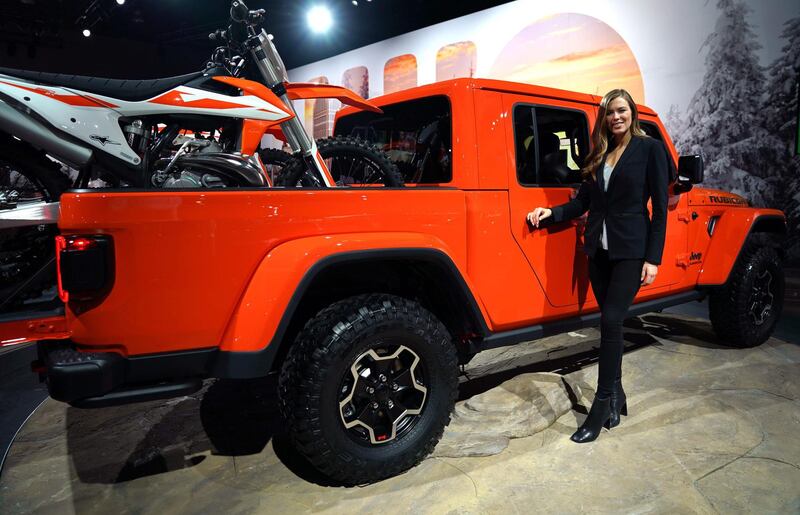A storm hit Detroit at the weekend, bringing the coldest air the city has felt in almost four years. As people knocked snow off their boots and shoes upon entering the city's Cobo Center on Monday, home to the North American International Auto Show, the winter chill seemed prescient. A different set of conditions, with longer lasting effects than those conveyed by weather forecasters, has arrived.
“Things have been going great, for seven or eight years. But the market had to slow up eventually,” said Robert Cooper, an engineer with the Ford Motor Company, spending his day off – a public holiday in honour of Martin Luther King – at the auto show.
Ford's decision earlier this month to cut 54,000 jobs in Europe is on the minds of all in Michigan who in 2008 found themselves at the mercy of government when the US auto industry failed.
A $80.7 billion bailout from Washington, lasting six years, came after a global financial crisis saw American banks saved by the government. General Motors and Chrysler said their looming bankruptcy would lead to one million job losses. Ford had already cut costs but asked to be included in the auto bailout so that it would not be at a disadvantage to its subsidised rivals. Meltdown in Motor City was averted but the American tradition of carmaking was humbled.
“I don't think it's going to go the same way as in 2008, but the cuts are obviously negative. None of us are insulated,” said Mr Cooper, 38, while surveying the technical aspects of Volkswagen's latest electric car.
Originally an aeronautical engineer, he quit the aviation arm of another American business behemoth – General Electric – and left Ohio three years ago to move to Detroit because the auto sector was booming. A propulsion specialist, he spends his work days in a laboratory seeking to improve drivechain performance, rather than the jet thrust of airplanes as in yesteryear.
Carmakers had high hopes for the presidency of Donald Trump, given his push for more America-based manufacturing. The reality, however, of his recent tariffs on China – a policy designed to address trade imbalances – has brought the auto sector back into focus as the consequences have been negative. Many US parts makers are having to pay more for components they have long sourced from the country Mr Trump seeks to punish. The result is less or no profit.
The industry's biggest players seem to be on a different course as the political rhetoric coming out of the White House. Ford announced last week it will increase collaboration with a European partner, Volkswagen, in commercial van and and pickup sector, largely to save money, in operations beginning in 2022.
“There's going to be more cooperation with foreign companies, not less,” said Mr Cooper.
American politics, locked in month-long partial shutdown of government, does not seem to have noticed. Before February 17, the Trump administration is due to release a report on whether Chinese automotive imports pose a threat to national security. It could mean new tariffs on an estimated $200 billion worth of imports, meaning higher costs to American consumers and job losses in the auto sector.
“There's risk to any company that imports or exports into markets that have tariffs associated with them,” said Steve Rooney, chief executive officer of Continental Structural Plastics, a specialist composite materials supplier, based in Auburn Hills, 40 miles north of Detroit. “My personal opinion is that cooler, rational heads will prevail. We all need each other: China needs the US and we need them.”
If any company should know how the auto industry has changed, it is the one headed by Mr Rooney.
Faced with debt problems when the downturn hit in 2008, it restructured and decided to broaden not narrow its global focus. It prospered by winning important contracts with Jeep and Toyota and in 2014 launched a joint venture in China, supplying lightweight composite, in place of what would once have been steel or aluminium parts, to automakers serving the Beijing market. A second site will soon be supplying car makers in and around Shanghai.
______________
Read more:
After two years of Trump, disorder and isolation
[ Donald Trump has destroyed America's credibility with one tweet ]
One third of UN's workers suffered sexual harassment
______________
Since 2010, its North American income has grown steadily from $280 million to more than $700 million last year and is projected to top $800 million in 2019. The company was acquired by Japan's Teijin Group in January 2017.
“We see the car market, although it's flat, filled with opportunities for composite components, as there are other applications out there. I don't by any means see anything like 2008-2009 happening in cars, but I do see an inevitable slowdown in the industry.”
A similar view of the broader American economy was offered by Tim Bozak, 53, who last year sold his financial advisory business in Bay City, 185 kilometres north of Detroit. He attends the auto show every year.
“I'd had a good run since 2008, and made a few million, but I could see it was time to get out. The effects of any stimulus can only last so long. There's a slowdown coming and we're going to get pulled into that.”






